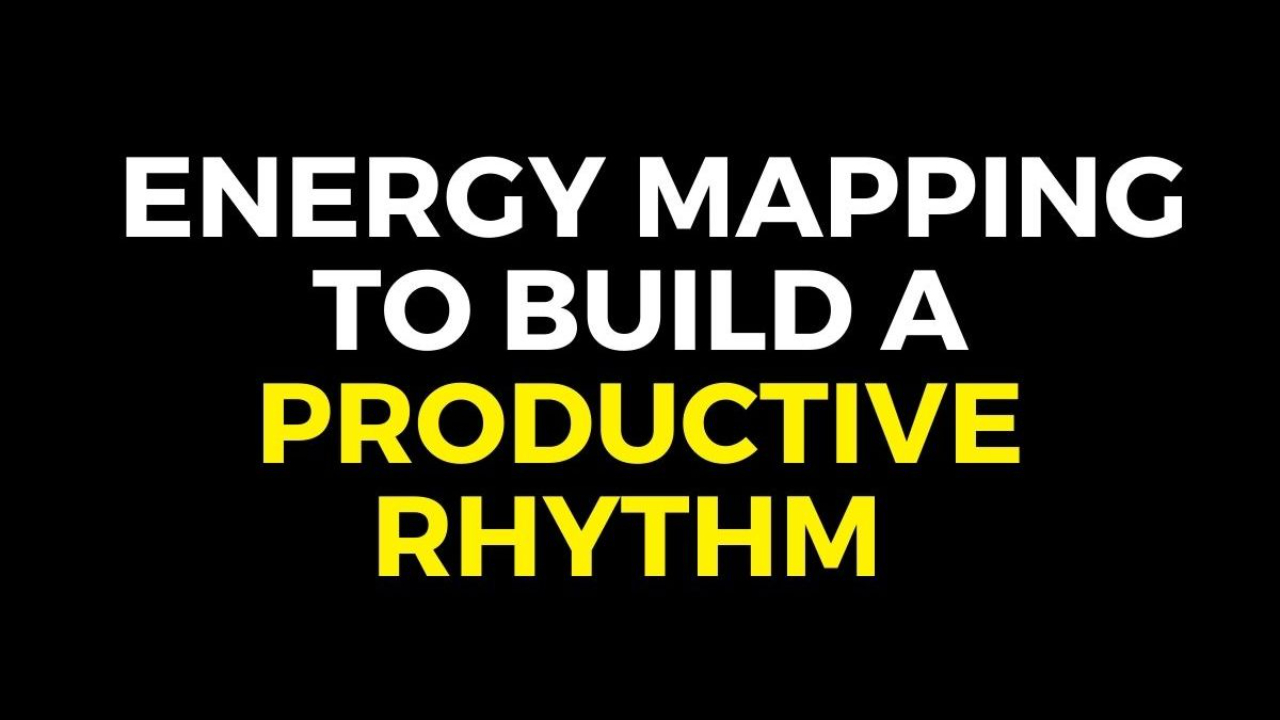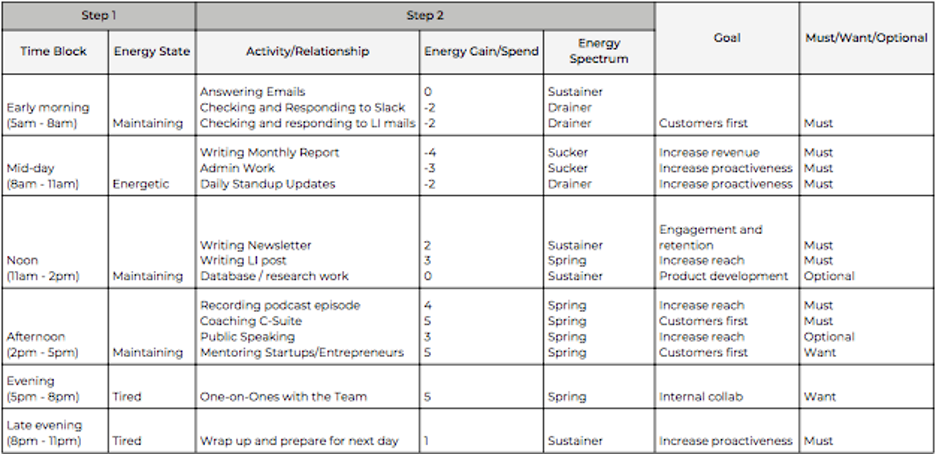
How to Use Energy Mapping to Build a Productive Rhythm for Work & Life
Mar 25, 2023Our energy is one of the most precious resources we have.
When it’s used wisely, we can live successful and satisfying lives driven by high levels of performance and growth across the spectrum of our lives. However, when we spend it on the wrong things at the wrong times, we can quickly find ourselves feeling stressed, burned out, low on productivity and arriving face to face with a host of health problems.
Part of my knowledge comes from lived experience. I spent over 20 years in the startup and corporate innovation industry. I’ve been a high-performer my entire life, and have always been driven by working hard and moving fast.
To top it off, I’m a self-admitted people pleaser: whether across my professional life or personal life (the two often become conflated without even realising it, especially if you’re an entrepreneur), I’ve tended to say “yes” to so many things that really deserved a “no.” I had no understanding of when I was reaching my energy limit early on in my career, and I ended up sabotaging my own productivity as a result.
Eventually, I learned that this was not sustainable. I began to re-evaluate how to spend my energy in smarter ways - much of which started with setting strong boundaries for myself. “Energy mapping” helped me do just that - and today I work on this technique with my C-suite and entrepreneur clients from across the globe.
Here are three actionable steps that will help you create a healthy and productive rhythm using energy mapping.
Step #1: Audit Your Energy Levels
Before you dive headfirst into creating a new rhythm for yourself, you first need to have an understanding of what your energy levels are currently like. Given the fact that 75% of workers have experienced burnout, this is extremely important. Doing a personal energy audit is a great way to gain an understanding of your energy usage and identify energy saving opportunities.
I like to think of energy like a tank. A full tank means you’re fully charged and ready to go. Your work performance is at its peak and your creativity is at its best.
An empty tank, on the other hand, means you’re depleted. This is a time to rest and recharge.
To discern where your natural highs and lows occur over the course of your day, ask yourself these six questions:
- When you get out of bed in the morning, does your brain immediately switch on, or do you need some time to wake up first before being in peak state?
- Do you perform best at the gym in the morning, mid-afternoon, or evening?
- When do you find yourself reaching for a cup of coffee?
- What time of the day or week do you usually feel most energetic?
- When are your physiological and bodily lows of the day?
- How do seasons (winter, summer, longer, or shorter days) affect your workflow?
Use your answers to get an idea of when your energy peaks, drops, and sustains on a typical workday.
Step #2: List & Assign An Energy Value to Your Daily Activities
Next, you’ll want to list out a schedule of the activities that are regularly part of your daily to-do’s. Listing out your to-do’s can actually help reduce stress and anxiety in and of itself. With 41% of workers reporting that stress causes them to be less productive, that’s a big deal! But we’re going to take it the traditional to-do list one step further.
Beside all the activities and engagements you list out, assess whether you gain or spend energy by assigning an energy value to each task. You can do this using the following energy value spectrum:

It’s important to note the following when you’re assigning energy values:
- Energy Springs (3 to 5): make you feel excited/enthusiastic
- Energy Sustainers (0 to 2): make you feel indifferent/neutral
- Mild Energy Drainers (-1 to -2): leave you feeling slightly depleted
- Energy Suckers (-3 to -5): leave you feeling resistant, demotivated, and quickly exhausted
Step #3: Create an Energy Map
Now that you have a list of activities with assigned energy values, it’s time to turn that into an energy map!
An energy map is a tool that can be used to rewire your habits and improve your overall lifestyle. It’s a way to train yourself to be more mindful of your energy levels.
Start out the energy mapping process by creating a chart that has four columns - your work activities, the energy gain/spend associated with them, the goal of each activity, and a must/want/optional column where you assign the level of urgency to each activity. It should look something like this:

Then, add in a time block column where you allocate the right time of day to do each activity based on your energy levels. Also add an energy state column that indicates what your energy levels are like during that time of day - Energetic, Maintaining, or Tired - as well an energy spectrum column that clearly shows whether the activities you are doing are Energy Suckers, Drainers, Sustainers or Springs. Ideally, you should schedule Energy Suckers when you have lots of energy and Energy Springs when your energy is at its lowest.
Here’s an example of an energy map that showcases a morning person’s work rhythm:

That’s it! After following this simple three-step process, you’ll have an energy map that will help you be more proactive, better understand your limits, and optimise your productivity. Energy mapping has been extremely transformational for me, and I can’t recommend it enough.
For more tips and tools that’ll help you with the energy mapping process, download my free energy mapping resource today. Happy mapping!
—
Anna C Mallon is a Venture Capitalist, Startup Advisor, and Entrepreneur helping founders and tech professionals across the globe balance both hypergrowth and health.
A global citizen, Anna speaks 5 languages and has lived in Asia, Europe, and the U.S. She is a sought-after global speaker, former Techstars Mentor and University Lecturer on innovation and entrepreneurship.
